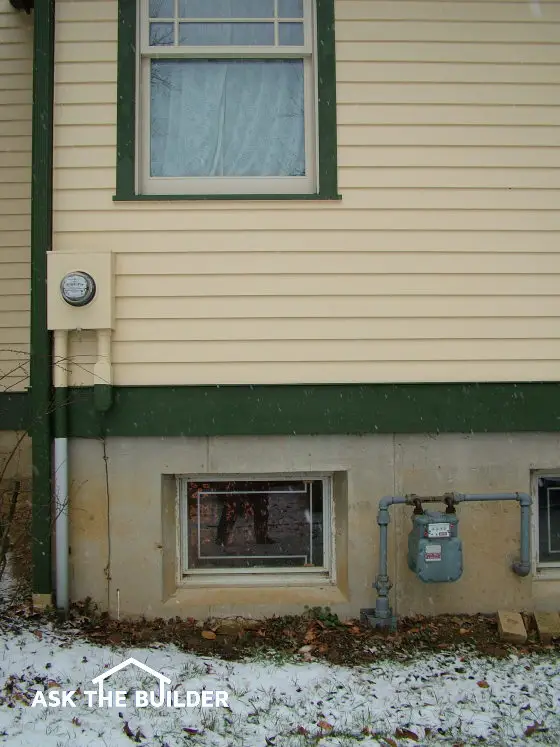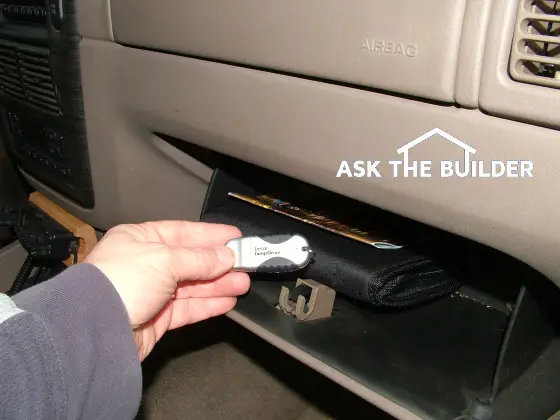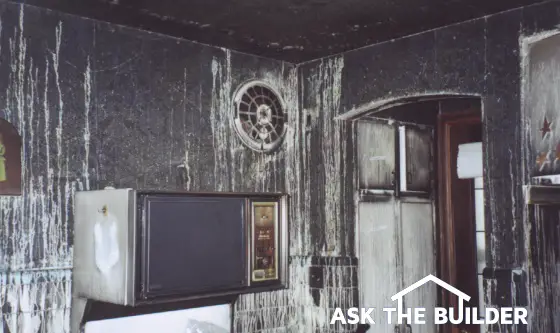Tim: Let's go back to the phones. Once again if you just
happened to tune in, I'm Tim Carter. This is WGRR. It's the
Ask The Builder Show. Coming up in just 13 minutes we've got
Denny McKewen, but right now though it's time to ask the
builder. Paul, what's your question today? Hello, Paul.
Paul: Yes, Tim. Thanks for taking my call.
Tim: Oh, it's my pleasure.
Paul: I have a couple of questions for you today. I have an
older home that was built in 1919.
Tim: Okay.
Paul: And my basement walls are rock.
Tim: Okay.
Paul: And I'm getting some seepage in my basement.
Tim: Yes.
Paul: I want to dig down outside and put in drain tile. Is
it best to go all the way to the bottom of the wall at the
footer to put in that tile?
Tim: Well, yes it is, but I don't know that you have to do
that. Have you been to my website? Have you read my columns
about linear French drains?
Paul: No, I haven't.
Tim: You may want to do that, because I'll bet you that you
can stop 98%, maybe 99% with just this very simple system.
I've had hundreds of people do it. They have emailed me and
in almost every single case, it has solved all of their
problems. All a linear French drain is... you know how a
gutter works on a house?
Paul: Yes, Uh-huh.
Tim: Okay. A gutter collects the water before it hits the
ground, you know, like splashes off the roof? And then what
the gutter does is it collects it and redirects the water to
the downspouts that you just told me to talk about, and then
the downspout, if you extend it far enough away from the
house, it pipes the water away from your home.
Well, imagine if you took and put a gutter (I know this
sounds crazy) around your house in the soil. Now, the way
you do it, you don't put a metal gutter in. You actually dig
a trench that's 6 inches wide that's maybe 24 inches deep,
and you dig it all the way around the house and then you
extend the trench towards the lowest part of your lot. All
right?
Paul: Okay.
Tim: Now, in the bottom of a perforated drainpipe you fill
the entire trench all the way to the top with 1 inch rounded
gravel. Okay? Now, what happens is that water is moving
through the soil towards your house. What happens is it hits
that gravel and it goes, `My goodness, it's easy to go
through this gravel,' because it's hard to go through the
soil. It drops down through the gravel, it hits the pipe, it
finds this giant 4 inch diameter tunnel that's really easy
to go through, and the water just flows through that
perforated pipe and eventually exists out at the lowest part
of your lot. And actually, these linear French drains, they
almost act like a suction pump in the soil, because once
that water starts to flow into the pipe, it actually pulls
the water and the nearby soil into the pipe. It's amazing
how they work.
Paul: Okay. Do you dig this up next to the basement or out
from it a little bit?
Tim: No. I like to put it out about 6 feet away, because I
want the soil from the house to where this linear French
drain is to slope down towards it. Understand?
Paul: Okay. Yes sir.
Tim: You want to make sure that the soil around you house
in the first 10 feet out from the house slopes at least 6
inches, if not more. Denny McKewen's right here. He's our
gardening guy and I'm sure he's seen this too. Some of the
really poorly trained landscaping companies, they'll
actually take landscaping plans near houses and they
actually slope the grounds toward the house. They'll build
up mulch bed. They'll do all kinds of wrong things and
they've actually got water going the wrong way. So, you need
to have that ground sloping away from the house. And the
code is very specific about it. It says it wants 6 inches of
slope in the first 10 feet, and that's a minimum
requirement. In other words, if you can get it to slope a
foot, do it. All right?
Paul: Okay.
Tim: And it slopes right to where that linear French drain
is, and all I can tell you, they work and they work so well,
you just can't believe it.
Paul: Okay. I might not need to dig all the way down.
Tim: No, you do not need to dig all the way. I want you to
try this first. Go read that column and if you have any
questions, email me. Okay?
Paul: Okay. Let me ask you one other quick question.
Tim: Yes.
Paul: Is there any product out that will actually seal the
old rock foundation, the rock wall for a basement like
concrete?
Tim: Yes, you bet there is. In other words, if you had the
wherewithal, the money and you really wanted to do this; if
you actually brought in a backhoe and completely excavated
around the outside of your house, I mean completely did it,
all right? And went all the way down to the bottom rock, and
you took a pressure washer and you washed the stone on the
outside, got it completely so it looked like brand new when
they first built the house?
Paul: Uh-huh.
Tim: And then you stuccoed it. I mean, you'd actually bring
in a stucco contractor and stucco the outside so that it's
pretty smooth and then wait two weeks and have the people
from Rubber Wall or Tuff `N Dry come in to actually spray a
compound on the foundation. It would be completely
waterproof. But my guess is that might cost you about
$50,000.
Paul: Well, that's what I'm saying. That sounds expensive.
Tim: Huge money. But if you won the lottery, I could
waterproof the outside of that foundation and I would
guarantee it. So, yes, it can be done.
Paul: So, on your website you have some information on
there about the linear French pipe?
Tim: Yes, linear French drain. Just go on the left-hand
side of my website. In a column you're going to see a word
called `drainage' and click that drainage word and, believe
me, it's there.
Paul: Okay.
Tim: If you can't find it, email me. Just say, `Hey Tim, I
talked to you on the radio today and I can't find that
column about French drains.'
Paul: Okay.
Tim: All right, Paul!
Paul: Well, thank you very much, Tim. I appreciate the
information.
Tim: Call me anytime.
Paul: You have a great show!
Tim: Well, thanks very much. Thanks a whole lot.



